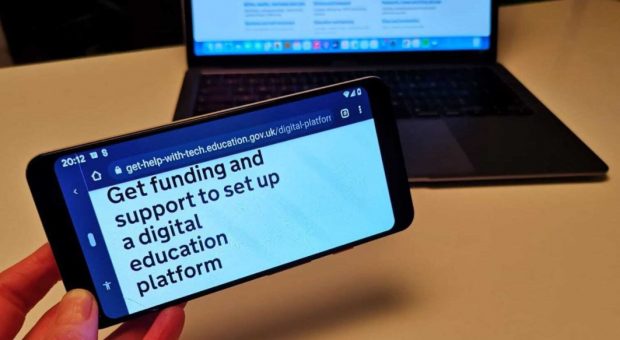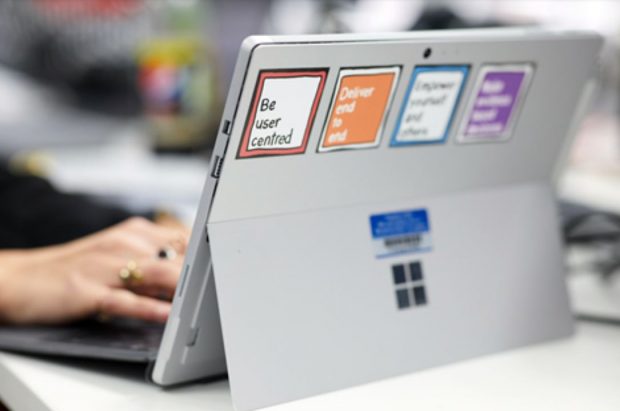
When schools and colleges closed due to the coronavirus pandemic, teachers needed a way to continue teaching students at home. The solution was to provide digital education platforms. This is the name we give to a set of tools and technologies that together enable pupils to learn online in virtual classrooms.
Digital education platforms are purpose-built for remote learning and they are so much more than just a school website.
Funding is available for schools to help them get set up on one of two platforms, either G Suite for Education (Google Classroom) or Office 365 Education (Microsoft Teams). Both are free to use.
The Digital education platform team, part of the wider Get help with technology programme, was tasked with rolling out these platforms to 8,000 schools across England by March 2021. By the end of December 2020 we had almost 7,000 requests from schools to set up 2.5 million student and staff accounts.
The roll-out
To respond to this challenge we’ve been collaborating with our partners, who include The Key for School Leaders, Google, Microsoft and several other IT suppliers.
Google and Microsoft provide the education platforms and functionality and the partner organisations work with schools to set up the platforms.
The Key for School Leaders shares guidance with schools and makes useful comparisons between the platforms to help school staff choose the one that best meets their learners’ needs.
The benefits of a digital education platform
Using these platforms, teachers can:
- teach classes as well as smaller groups of pupils
- communicate with their pupils
- set tasks for individuals as well as for larger groups
- let pupils work together
- give feedback
- share useful links to digital learning resources
- collaborate with their colleagues on lesson planning and related administrative tasks
All schools can now get good quality digital learning platforms, as well as training and support from other schools through the EdTech Demonstrator programme. (This programme launched in 2019 and right now its focus is helping schools and colleges to provide remote and blended education.)
Feedback from schools has been positive

The successful roll-out of these digital education platforms shows what can be achieved when teams of people from different sectors collaborate to put the right technology in place.
Like all user-centred services, it’s important to get feedback from users to keep improving the service. We’re proud of the positive reactions we’ve had so far from schools:
“We are very proud of the journey we have come in such a short space of time re digital learning and our education platform – from having what seemed like archaic offline ways of communication and IT infrastructures to a cloud-based platform that all teachers and staff have used. Staff are finding that workload has reduced, and many things have actually become easier in these challenging times.”
“Google Drive has made the paperwork of school leadership less lonely! I can share and invite staff to collaborate on documentation which is so much quicker than emailing, downloading, and printing. We will certainly never go back to how it was before!”
Challenges along the way
Doing this work remotely has been challenging.
Understanding schools’ local contexts and their priorities is much harder to do at a distance as you can imagine. We’ve had very few opportunities to meet with school staff face-to-face to hear about their needs and experiences of different technologies.
The speed at which we had to deploy the platforms meant we could not have as many in-depth conversations about how schools use tech as we wanted.
Schools have been extremely busy and on occasion platform roll-out has taken longer. Completing paperwork has proven to be a blocker. In situations like this our team has worked with our partners, suppliers and school staff to do whatever they can to speed things up.
Next steps
In this latest lockdown, we’re making sure all schools and colleges are set up on a digital platform. It’s therefore imperative that we continue our research with schools who’ve completed their platform set-up to find out what we can improve.
Follow DfE Digital on Twitter.
Subscribe to our blog.
Recent Comments